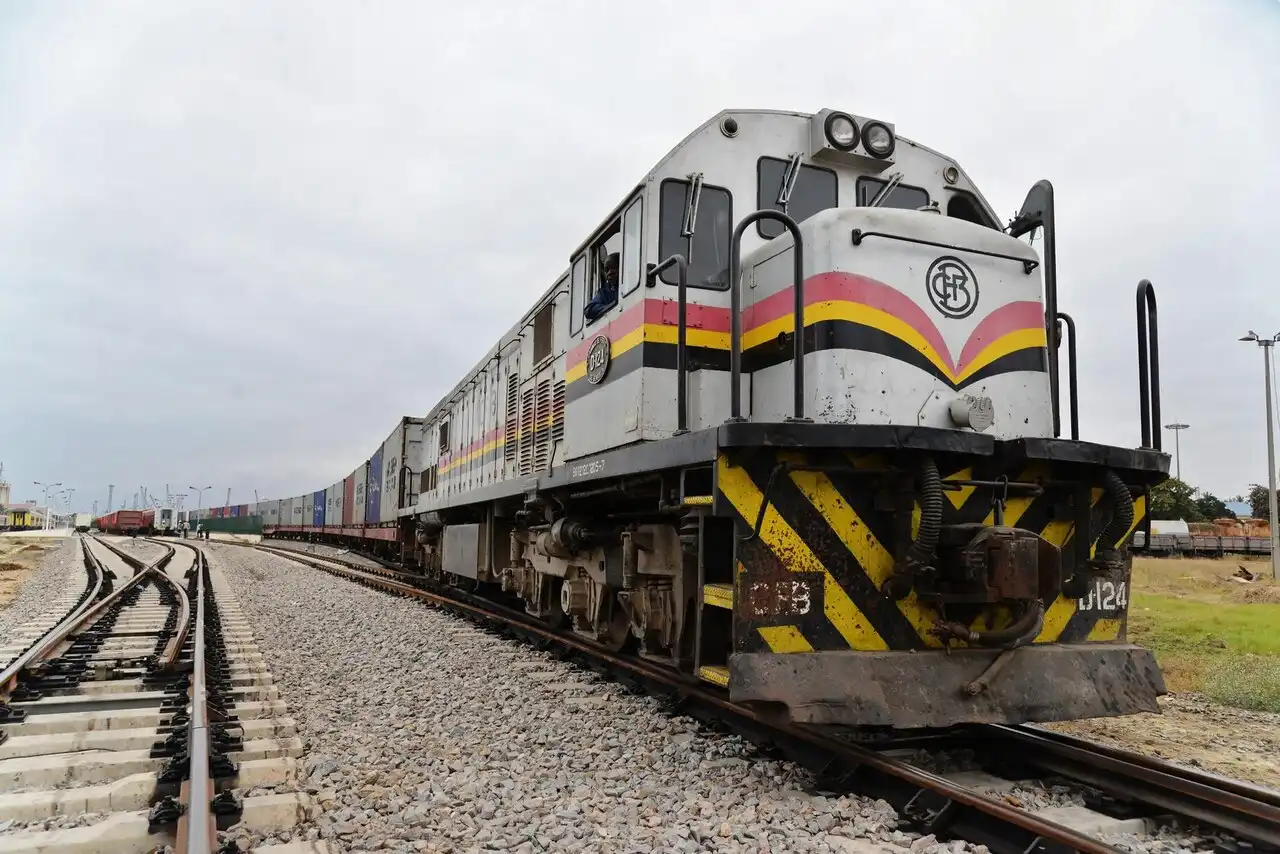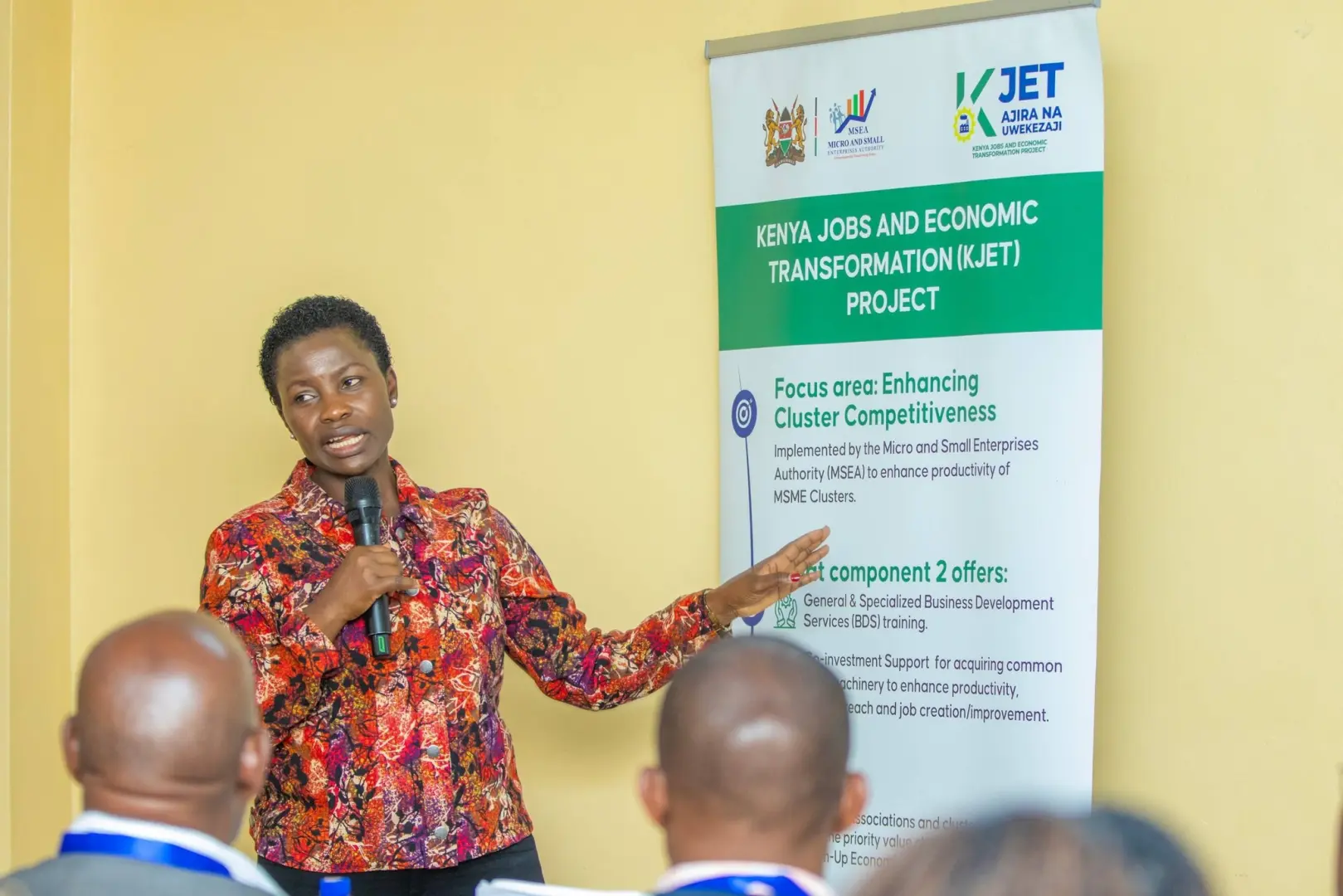The governments of Uganda and Kenya have signed a comprehensive free trade agreement to eliminate trade barriers and boost economic cooperation, marking a significant milestone in East African regional integration efforts.
Push boundaries, reach goals, achieve more. Whether it’s ACCA, HESI A2, ATI TEAS 7, HESI EXIT, NCLEX-RN, NCLEX-PN, or Financial Literacy, we’ve got the Online course to match your ambition. Start with Serrari Ed now.
Historic Agreement Transforms Regional Trade
The deal, signed last Friday following extensive negotiations in Mbale City, Uganda, aims at increasing bilateral trade, fostering investment and promoting economic growth across the East African Community region. The agreement follows a directive by President Museveni and his Kenyan counterpart, Dr William Samoei Ruto, during their bilateral meeting in Nairobi, Kenya from July 30 to July 31.
The directive ordered the respective ministers responsible for trade in both countries to convene a meeting to resolve all trade barriers between the two countries, including congestion along major trade corridors, especially Malaba and Busia border points, and eliminate both tariff and non-tariff barriers.
Shortly after the signing of the agreement in Mbale City, Mr Lee Kinyanjui, Kenya’s Cabinet Secretary of Investments, Trade and Industry, announced the groundbreaking nature of the deal.
“We have adopted that Kenya will treat products from Uganda as though they are from Kenya. So it will just be a transfer from Uganda to Kenya, or Kenya to Uganda, which means it will not attract any duties,” he explained.
Addressing Historical Trade Disputes
The agreement comes after years of intermittent trade disputes that have hindered the free flow of goods between the two nations. In March, Kenya imposed a ban on Ugandan powdered milk, claiming it was necessary to protect local producers, but lifted the ban several weeks later following diplomatic pressure.
Similarly, in 2021, the Kenyan government banned Ugandan eggs in a bid to protect Kenyan poultry farmers from what the government perceived as an oversupply of cheap Ugandan eggs. These protectionist measures had created significant tension between the two countries and undermined the spirit of East African Community integration.
Mr Kinyanjui emphasized that they have also agreed to remove logistical challenges that had resulted in long queues of cargo trucks at the border through the use of technology and other innovative measures.
“We want to ensure that nobody wastes more than two hours at the border for them to be able to come to Uganda or to go to Kenya so that our people can trade. On average a truck from Mombasa to Kampala would go like four trips if there were no delays, but they had reduced to two in one month,” he said.
Strategic Infrastructure and Border Management Improvements
Gen Wilson Mbasu Mbadi, the State minister for Trade, who led the Ugandan delegation, said the trade barriers have been significantly affecting the movement of goods and services between the two nations.
“We are now able to remove or break these non-tariff barriers that were coming through the levy of certain duties that go against the East African Community Treaty and Protocols,” he said.
In the agreement, the Ugandan government also committed to immediately address the issues related to the weighbridge operations along the major trade corridors as a measure to facilitate faster movement of goods. This commitment addresses a longstanding source of delays and additional costs for cross-border traders.
However, implementation challenges remain evident. Some cargo truck drivers allege that Uganda Revenue Authority officers demand bribes of Shs2,000 per truck to expedite clearance, causing delays as many drivers refuse to pay these unofficial charges.
“They cannot allow you to proceed until you have paid the money,” one truck driver said on the sidelines as the ministers from the two countries toured the border point of Malaba on August 29.
Joint Mechanisms for Trade Facilitation
Mr Kinyanjui announced that they have formed a joint team to handle trade-related concerns and ensure smooth implementation of the agreement. This institutional framework represents a significant improvement in bilateral trade management and dispute resolution mechanisms.
The ministers also agreed to fully implement all trade-related commitments under the EAC Treaty and Protocols, demonstrating their commitment to broader regional integration objectives beyond bilateral cooperation.
“In this regard, the ministers agreed to remove all discriminatory excise duties, levies and other charges of equivalent effects,” according to the communique dated August 30, 2025.
Economic Impact and Trade Statistics
The economic significance of this agreement is substantial given the current trade volumes between the two countries. According to recent trade statistics, Kenya imported goods worth Sh37.7 billion from Uganda in the most recent reporting period, while Uganda represents one of Kenya’s most important regional trading partners.
In the broader EAC market, Kenya previously led regional trade, but for the first time in 2024, Tanzania overtook Kenya’s position, demonstrating the increasingly competitive nature of regional commerce and the importance of removing trade barriers to maintain market position.
The East African Community consists of eight member states: Democratic Republic of the Congo, Somalia, Burundi, Kenya, Rwanda, South Sudan, Uganda, and Tanzania, with a combined population of approximately 283.7 million people and growing economic integration ambitions.
Infrastructure Development Priorities
Both countries have prioritized completion of key infrastructure projects, including border posts, roads and bridges to aid the movement of goods and people across the region. The communique lists the Suam and Lwakhakha borders among the infrastructure projects earmarked for completion under this expanded cooperation framework.
On the Malaba border issue, the ministers directed the agencies in charge to clear congestion within 24 hours and maintain it to not more than four kilometers, representing a concrete commitment to measurable improvements in border efficiency.
Both countries have committed to upgrade road infrastructure, with Kenya specifically committing to acquiring scanning equipment for improved cargo processing. For the Suam border crossing, both nations are committed to completing construction works that will facilitate smoother trade flows.
“Both ministers directed joint border committees to be operationalized to resolve operational challenges and escalate unresolved matters to higher authorities,” the ministers said in their joint statement.
Build the future you deserve. Get started with our top-tier Online courses: ACCA, HESI A2, ATI TEAS 7, HESI EXIT, NCLEX-RN, NCLEX-PN, and Financial Literacy. Let Serrari Ed guide your path to success. Enroll today.
Regional Integration Within Continental Context
This bilateral agreement occurs within the broader context of African continental integration efforts. Both Kenya and Uganda are founding members of the African Continental Free Trade Area (AfCFTA), which came into force in January 2021 and represents the world’s largest new free trade area since the establishment of the World Trade Organization in 1994.
The East African Community has been recognized as one of the most successful regional integration initiatives in Africa, serving as a model for broader continental integration efforts. The EAC has progressed through multiple stages of economic integration: establishing a Free Trade Agreement in 2000, a Customs Union in 2005, and a Common Market in 2010.
Research on EAC regional economic integration demonstrates that economic integration has led to deeper social, political and economic integration, with the establishment of common market protocols facilitating increased cross-border investment and trade flows.
Global Trade Relationships and Strategic Partnerships
Kenya’s trade policy extends beyond regional integration to include strategic partnerships with global powers. The country has been negotiating with the United States for a Strategic Trade and Investment Partnership (STIP), announced in July 2022, which aims to increase investment and promote sustainable economic growth.
Additionally, Kenya concluded a Comprehensive Economic Partnership Agreement with the United Arab Emirates in February 2024 to advance trade cooperation, demonstrating its strategy of diversified international economic partnerships.
The U.S.-EAC trade relationship has grown significantly, with U.S. goods exports to the East African Community totaling $1.1 billion in 2022, up 15% from 2012, while imports reached $1.3 billion, up 121% from 2012.
Technology and Digital Trade Integration
The agreement emphasizes the use of technology to streamline border processes and reduce transaction costs. This aligns with broader trends in African regional integration, where digital solutions are increasingly important for facilitating cross-border trade and reducing barriers to regional commerce.
The EAC has developed various digital platforms, including the EAC Trade Information Portal, which provides step-by-step guides on licenses, pre-clearance permits and clearance formalities for the most traded goods within the region.
Both countries are working to implement electronic systems for customs processing and border management, which should significantly reduce the time and cost of cross-border trade while improving transparency and reducing opportunities for corruption.
Private Sector Response and Business Climate
The private sector in both countries has welcomed the agreement, recognizing its potential to unlock significant economic opportunities. Regional market integration research shows that cities near border crossings typically benefit most from increased market integration, with growth effects being large but often temporary and highly localized.
The Kenya Association of Manufacturers and Uganda Manufacturers Association have both expressed optimism about the agreement’s potential to create economies of scale and improve competitiveness for regional businesses.
Small and medium-sized enterprises are expected to be major beneficiaries, as reduced trade barriers will enable them to access larger markets and benefit from regional supply chain integration.
Implementation Timeline and Monitoring Mechanisms
The implementation of this agreement will be closely monitored through the joint committees established by both governments. Regular reviews will assess progress in eliminating remaining barriers and addressing new challenges as they emerge.
The success of previous EAC integration efforts provides both lessons and confidence for this bilateral initiative. The region has successfully increased both inter- and intra-regional trade and witnessed increases in foreign direct investment flows.
Key performance indicators will include:
- Reduction in average border crossing times
- Increase in bilateral trade volumes
- Elimination of specific non-tariff barriers
- Improvement in business climate indicators
- Enhanced regional supply chain integration
Challenges and Risk Mitigation
Despite the optimistic outlook, several challenges could affect implementation success. Historical patterns in East African integration show that political alignment and sustained commitment are crucial for long-term success.
The original EAC collapsed in 1977 due to political disagreements and unequal benefit distribution, providing important lessons for current integration efforts. Ensuring that both countries benefit equitably from increased trade will be essential for sustained cooperation.
Corruption concerns, infrastructure limitations, and varying regulatory frameworks represent ongoing challenges that will require continuous attention and coordinated solutions from both governments.
Future Prospects and Regional Leadership
This Kenya-Uganda agreement could serve as a catalyst for broader EAC integration and provide a model for other African regional economic communities. The success of this bilateral initiative may encourage similar agreements among other EAC member states and contribute to the broader success of the African Continental Free Trade Area.
Both countries are positioning themselves as leaders in African economic integration, with President Ruto currently serving as the EAC chairman and President Museveni bringing decades of experience in regional cooperation efforts.
The agreement also strengthens both countries’ positions in global value chains and enhances their attractiveness to international investors seeking to access regional markets through improved trade infrastructure and reduced regulatory barriers.
As Kenya and Uganda move forward with implementing this historic trade agreement, the success of their bilateral cooperation will be closely watched across Africa as a potential model for accelerated regional integration and economic development. The elimination of trade barriers between these two regional economic powerhouses represents not just a bilateral achievement, but a significant step toward the broader goal of African economic unity and prosperity.
Ready to take your career to the next level? Join our Online courses: ACCA, HESI A2, ATI TEAS 7 , HESI EXIT , NCLEX – RN and NCLEX – PN, Financial Literacy!🌟 Dive into a world of opportunities and empower yourself for success. Explore more at Serrari Ed and start your exciting journey today! ✨
Track GDP, Inflation and Central Bank rates for top African markets with Serrari’s comparator tool.
See today’s Treasury bonds and Money market funds movement across financial service providers in Kenya, using Serrari’s comparator tools.
Photo source: Google
By: Montel Kamau
Serrari Financial Analyst
1st September, 2025
Article, Financial and News Disclaimer
The Value of a Financial Advisor
While this article offers valuable insights, it is essential to recognize that personal finance can be highly complex and unique to each individual. A financial advisor provides professional expertise and personalized guidance to help you make well-informed decisions tailored to your specific circumstances and goals.
Beyond offering knowledge, a financial advisor serves as a trusted partner to help you stay disciplined, avoid common pitfalls, and remain focused on your long-term objectives. Their perspective and experience can complement your own efforts, enhancing your financial well-being and ensuring a more confident approach to managing your finances.
Disclaimer: This article is for informational purposes only and does not constitute financial advice. Readers are encouraged to consult a licensed financial advisor to obtain guidance specific to their financial situation.
Article and News Disclaimer
The information provided on www.serrarigroup.com is for general informational purposes only. While we strive to keep the information up to date and accurate, we make no representations or warranties of any kind, express or implied, about the completeness, accuracy, reliability, suitability, or availability with respect to the website or the information, products, services, or related graphics contained on the website for any purpose. Any reliance you place on such information is therefore strictly at your own risk.
www.serrarigroup.com is not responsible for any errors or omissions, or for the results obtained from the use of this information. All information on the website is provided on an as-is basis, with no guarantee of completeness, accuracy, timeliness, or of the results obtained from the use of this information, and without warranty of any kind, express or implied, including but not limited to warranties of performance, merchantability, and fitness for a particular purpose.
In no event will www.serrarigroup.com be liable to you or anyone else for any decision made or action taken in reliance on the information provided on the website or for any consequential, special, or similar damages, even if advised of the possibility of such damages.
The articles, news, and information presented on www.serrarigroup.com reflect the opinions of the respective authors and contributors and do not necessarily represent the views of the website or its management. Any views or opinions expressed are solely those of the individual authors and do not represent the website's views or opinions as a whole.
The content on www.serrarigroup.com may include links to external websites, which are provided for convenience and informational purposes only. We have no control over the nature, content, and availability of those sites. The inclusion of any links does not necessarily imply a recommendation or endorsement of the views expressed within them.
Every effort is made to keep the website up and running smoothly. However, www.serrarigroup.com takes no responsibility for, and will not be liable for, the website being temporarily unavailable due to technical issues beyond our control.
Please note that laws, regulations, and information can change rapidly, and we advise you to conduct further research and seek professional advice when necessary.
By using www.serrarigroup.com, you agree to this disclaimer and its terms. If you do not agree with this disclaimer, please do not use the website.
www.serrarigroup.com, reserves the right to update, modify, or remove any part of this disclaimer without prior notice. It is your responsibility to review this disclaimer periodically for changes.
Serrari Group 2025
















